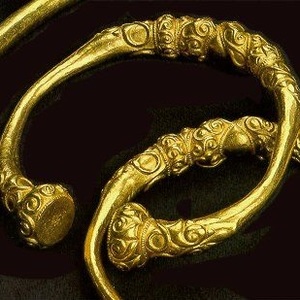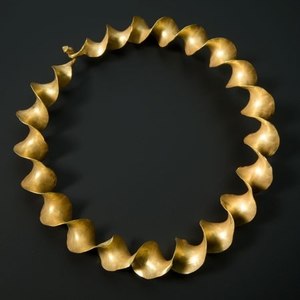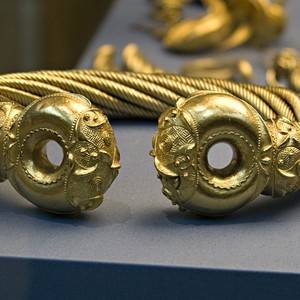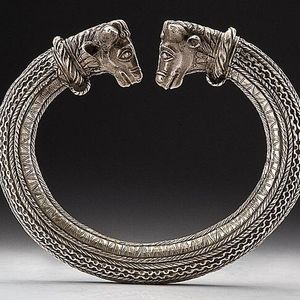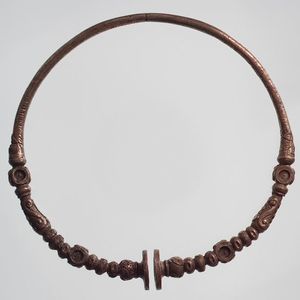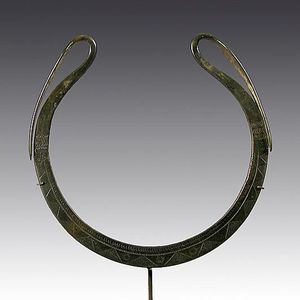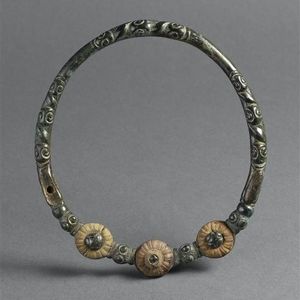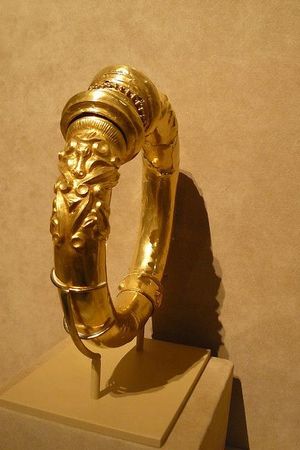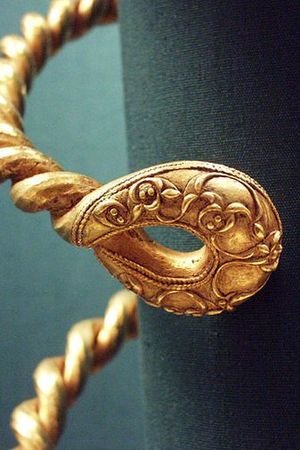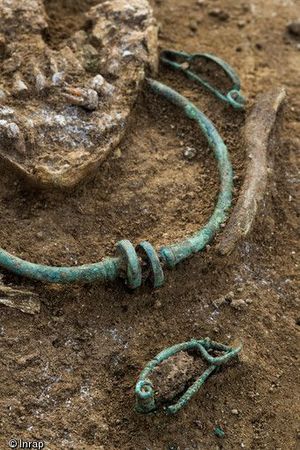Torques
A torques (Latin: torques, also spelled torc) is a Celtic neck ornament in the form of an open ring, made of bronze, silver, or gold. Torques have also been found that were worn around the waist, across the chest, or on the wrists. The Latin name torquere or torques comes from the Latin verb torqueo, meaning "to twist" or "to turn."
The open ends of the torques were often intricately decorated. These open ends allowed the necklace to be bent and removed, although this was not always possible due to the great strength of the thick metal strands from which the torques were made. Such necklaces were often designed for permanent wear, and alongside open-ended torques, there were also ornaments made in the form of solid rings.
Today, the torques is one of the symbols of Celtic culture, although similar neck rings were also known among the Scythians, Illyrians, Thracians, and other peoples of the European Iron Age, dating back at least to the 7th century BC.
Archaeologists often find torques that have been broken into pieces, suggesting that they were used as a form of exchange and savings. It is also noted that Iberian gold torques were made to specific weights, corresponding to the Phoenician shekel.
The oldest Celtic torques have been found in the burials of women. It is believed that until the end of the 3rd century BC, the torques was a female ornament, after which it became an attribute of warriors and Celtic chieftains. A golden, elaborately decorated torques came to signify wealth and high status for its owner.
The first appearance of torques in Sicilian art dates back to the early Iron Age, around 500 BC. Titus Manlius earned the nickname "Torquatus" after taking a torques from a slain Gaul. Many of his descendants, who were prominent in Roman history, bore this name.
Related topics

 Gallery
Gallery






